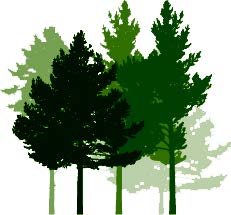Search technical reports
Bioactivity of Heartwood Compounds
By Gayatri Mishra and Clemens Altaner, July 2018.
Download SWP-T060 (pdf)
Executive summary
This report is based on work according to SWP Work Plan No. SWP-WP026. The results are part of Gayatri Mishra’s PhD thesis, of which the relevant chapters are attached in the Appendix.
The primary product from plantations of naturally durable eucalypts is ground-durable timber, for example to be used as posts in the agricultural sector (Millen, 2009). The key wood property to ensure a quality product is the natural durability of the wood. It is well known that the natural durability of heartwood is a) highly variable within a species (Page et al., 1997) and b) lower at the centre of a tree (AS5604, 2005; Sherrard and Kurth, 1933). Therefore, NZDFI’s strategy is to screen in the first instance for high heartwood extractive contents (Li and Altaner, 2016). Heartwood extractives are the key factor, which provide natural durability to wood (Hawley et al., 1924). However, heartwood extractives are numerous and their relative abundance is variable within a species (Haupt et al., 2003; Hillis, 1987; Rowe, 1989). Therefore, it is of interest to identify the most bioactive compounds in the naturally durable eucalypts (Davies et al., 2014; Van Lierde, 2013).
In previous work under the SWP programme (SWP-T037) we have developed a method to quantify individual heartwood compounds. This workplan describes the development of an assay to test the bioactivity of heartwood extractives (Appendix 1) which was subsequently used on a range of heartwood samples representing the genetic variation in the breeding population. By combing the bioactivity assay with the quantification of heartwood extractive compounds the bioactivity of those compounds was investigated (Appendix 2).
Key findings
- A method of testing the bioactivity of E. bosistoana heartwood extracts against T. versicolor and C. cerebella – two fungi commonly used to test wood decay – was developed. Extract DMSO solution was transferred to petri dishes filled with hardened agar. The dishes were inoculated with mycelium. The diameter of the fungus in the agar plates was measured daily. Controls were run with and without DMSO. The test had a CV of less than 11.13% within a batch. Variation in growth rate between different runs needed to be accounted for by normalising the fungal growth rate by that in the controls, i.e. calculating a relative growth rate.
- Ethanol extracts from E. bosistoana heartwood were less effective on the white rot T. versicolor with a relative growth rate of 83% than the brown rot C. cerebella (60%).
- No relationship was found between the growth rates of white rot and brown rot in extracts indicating that different compounds in the extracts inhibited the growth of the two fungi.
- No correlation was observed between the extractive content in the wood and the bioactivity of the extracts against the brown rot. Extractive content in the wood had a negative influence on the bioactivity towards the white rot for the Lawson, but not the Craven Road site. This suggested that the trees with elevated extractive content at the Lawson site deposited more compounds into the heartwood, which were not bioactive against white rot.
- Significant variability was found in the bioactivity of E. bosistoana heartwood extracts against white rot and brown rot between the trees. The difference in the relative growth rates of white rot between the sites was small and only significant for white rot. Therefore, the site influence on the bioactivity of the heartwood extracts was small.
- Thirty one compounds were quantified by GC in E. bosistoana ethanol extracts of which five were tentatively identified. Variation was present in composition of the extracts between trees and sites. Multivariate (PLSR) analysis identified compounds eluting at 10.2 and 11.5 min (Hexadecanoic acid, TMS ester) to be most related to the bioactivity of the E. bosistoana heartwood extracts against the tested white rot and brown rot.
- Significant variation in eight compounds (9.9, 11.2, 11.7, 22.3, 22.8, 23.3, 25.1, 33.3 min), out of 31 compounds was found between the sites. However, these did not have a large effect on the bioactivity of the heartwood extracts towards the two tested fungi.
Limitation
GC was chosen to quantify individual components in the ethanol extracts of E. bosistoana heartwood as the technique has a high resolution allowing the separation of numerous compounds - which was demonstrated in this work. However, the technique relies on the compounds entering the gas phase. It is likely that a large proportion of the extract (e.g. larger hydrophilic molecules like tannins) did not meet this criteria even after derivatisation and hence the analysis did not account for these compounds. Oligomeric tannins are known to a) interact with proteins and b) be present in eucalyptus tissue.

 Specialty Timbers New Zealand
Specialty Timbers New Zealand
No posts yet
Add a post